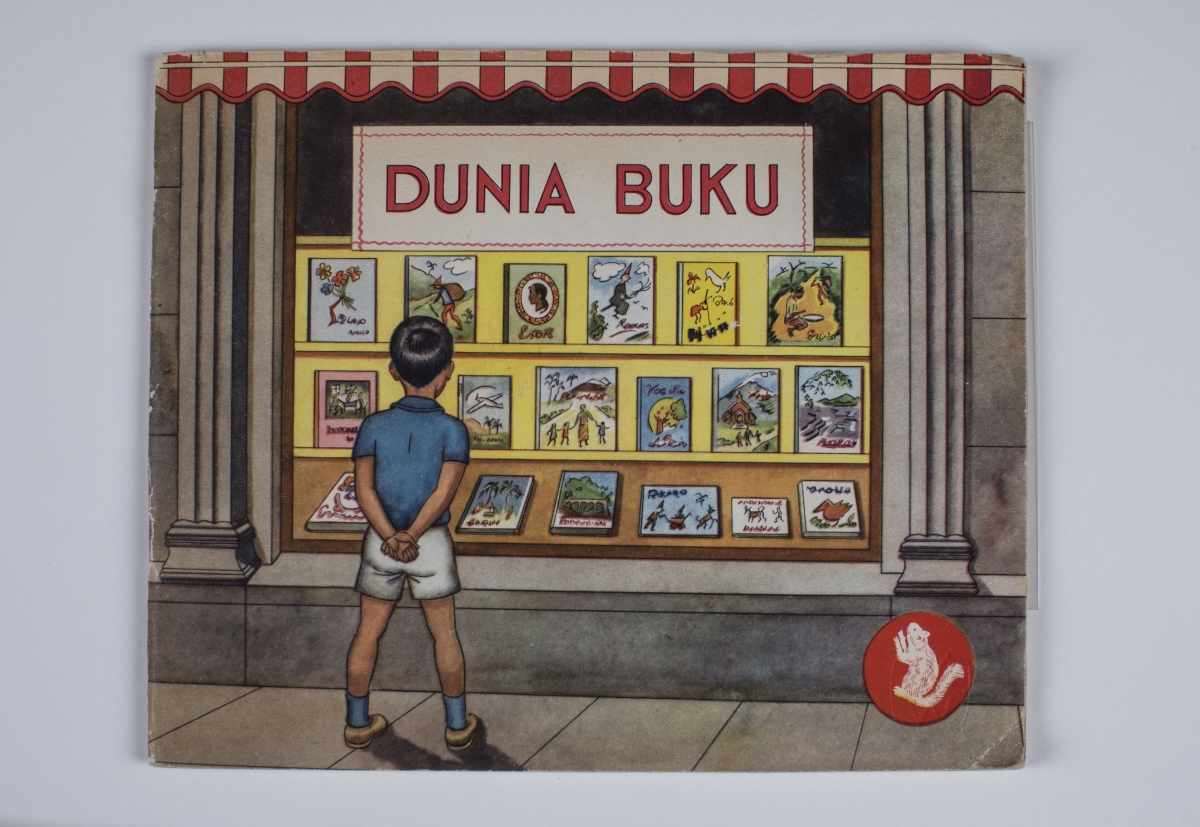'Gordel van papier’ about the advent of the printed book in Indonesia
Has been | 21 September 2023 - 25 February 2024

From 21 September 2023 to 25 February 2024, House of the book will stage the exhibition ‘Gordel van papier’ about the advent of the printed book in Indonesia. It covers the period 1816-1957; the period in which The Netherlands had colonized the archipelago under the name ‘Netherlands-East-Indies’ until the moment when all Dutch companies there were nationalized. The exhibition opens with an impression of the rich writing and reading culture of the Indonesians with lontar-manuscripts and richly illustrated pustahas made of tree bark. In the midst of that, the printing press appeared and, as of 1816, a culture of printed books, magazines, and all other kinds of printed material came into being. The exhibition will give visitors an intriguing glimpse into the developments within the (post)colonial society. There are examples of types of elegant Javanese characters, colonial schoolbooks, and publishers’ promotional material, as well as printed material, that show the sharp edged discrimination and how the longing for a free Indonesia had been captured in print long before the Indonesian Revolution. The latter is exemplified by the more iconic, rare bilingual writing from 1913 ‘Als ik eens Nederlander was…’ by Soewardi Soerjaningrat and revolutionary newspapers, such as De Expres.
Tegenover het handschrift bracht de drukletter de voordelen van massaproductie en verspreiding met zich
Consequences of book production
Contrary to expectations and intentions, the printing press followed its own way in the 19th century. The volume of printed material grew substantially and became more and more wide-spread. It reached miscellaneous target audiences and local writing talents took up their pens. In the end, all of this contributed to Indonesia’s independence. The books and pamphlets in the exhibition – by the Landsdrukkerij and by Balai Poestaka (Bureau of Popular Literature), of the missionary organizations and, more often, of private Indonesian, Chinese, and Dutch publishers – show different, sometimes conflicting, interests. From 1920, more and more Indonesian publishing houses appeared in the book trade and around 1950 they made up the majority.
Mass/High-volume production and distribution
Compared to the handwriting, printed letters came with the advantages of mass production and distribution. All of a sudden, texts could reach a far wider audience. On top of that, lithography made it possible to multiply handwritings while still keeping the traditional appearance of a manuscript. Dutch commercial typefoundries such as Enschedé and Tetterode, developed lead types for several Indonesian languages and fonts, among which the Javanese, Madurese, and Sundanese, in order to reach the Indonesian population with printed material. Examples of this with accompanying proofs can be seen at the exhibition.
The transfer to an independent Indonesia with its own book production
The continued presence of Dutch publishing houses, printing offices, and bookstores in Indonesia was put in a different light after the Second World War. Printed material would play an important role in Indonesia, both during, and after the Indonesian Revolution. Books from this period provide an overview of the events. But more important is how it shows that the creators of the printed matter themselves have driven profound changes in society.
Collaborative project
House of the book works with an advisory board for this exhibition consisting, among others, of: Angelina Enny, Agus Suwingyo, Farabi Fakih, Sebastiaan Broere, Tom Hoogervorst, Remco Raben and, Margaret Leijdelmeijer. The exhibition is based on the book Met een drukpers de oceaan over by Lisa Kuitert and the ongoing research by Eline Kortekaas. Together, they are guest curators of this exhibition, which is organized in collaboration with the University of Amsterdam, the KB national library, and the University Libraries Leiden.
The exhibition results from the NWO-research Decolonizing knowledge. Postcoloniality and the making of modern Indonesia’s knowledge culture, 1945-1970. One of the projects in this research bears upon the publishers. The past years, Eline Kortekaas has studied the book culture in Indonesia 1945-1965, with particular interest in the Dutch publisher W. Van Hoeve. She hopes to conclude her research this year.



Captions
- Folk Literature ‘Reizende bibliotheek’ (traveling library), presumably 1930s, photographer unknown.
The traveling library was part of Balai Poestaka, the Dutch-colonial initiative to provide ‘good’ books to the Indonesian people. The photograph shows how printed material was distributed then and how the book also reached places without book stores.
- Imam Supardi, Bung Karno sebagai Kokrosono, Pustaka Nasional Surabaia, c. 1948. This book, whose title can be translated as: ‘Sukarno as Kokrosono,’ was published during the Indonesian Revolution and was meant as a support to the Indonesian people. The story of Kokrosono originates from the Javanese wajang. Kokrosono was the legal heir to Mandura, which was ruled by the demon Kongso. After a period of living as a hermit Kokrosono returned and succeeded in defeating the demon.
- J. Van der Heyden, Nieuw Indisch ABC, Boekhandel Visser & Co., Weltevreden, approx. 1925.
The Nieuw Indisch ABC, which was earlier published as the Indisch ABC, is an example in which a well known teaching method, the ABC, had been adapted for colonial society and aimed at the Dutch(-Indonesian) child. It was printed in the colonies.
- Mas Badjing, Dunia Buku, Penerbitan dan Balai Buku Indonesia, Djakarta, Surabaia, approx. 1950
Dunia Buku (Boekenwereld), was published as part of the Badjing-series which was published in the 1950s by Penerbitan dan Balai Buku Indonesia, known in the Netherlands as De Moderne Boekhandel Indonesia. It was a Dutch company, located in Jakarta. The book and the production of books is explained in this children’s book.
